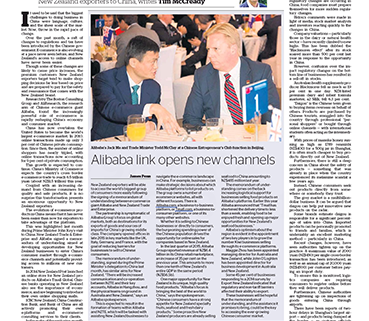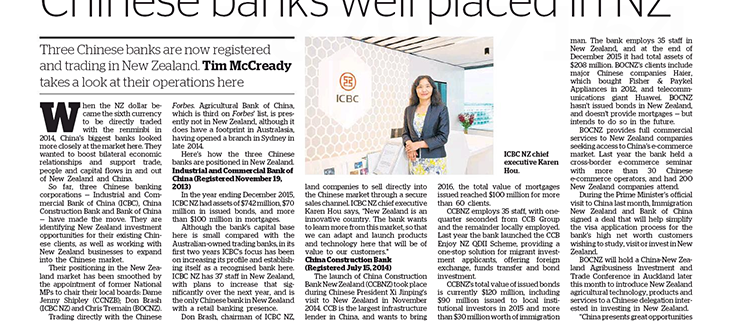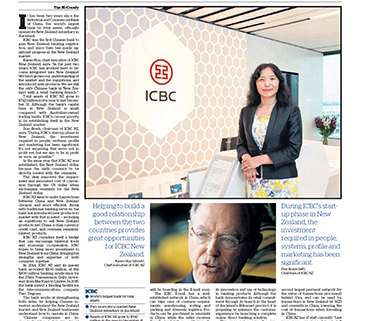Tripartite Summit: High Value Foods – Mega Trends & Opportunity
- The food industry is undergoing massive change. Farming systems and sources of food are being transformed around the world, new retail models are emerging in the food sector, and consumer demand is rapidly changing.
- Reinvention of New Zealand’s food industry is critical to the country returning to the forefront of exporting and developing food and agribusiness products.
- The global challenges in the food industry are so urgent that it is no longer alright to focus on research for research sake – there must be a connection between research and the adoption routines of the marketplace.
“It is a fast moving world and no longer alright to focus on research for research sake. The problems we face are so urgent that there must be a continuing connection between research and the adoption routines of the marketplace.” – Rohit Shukla
The challenge faced by New Zealand
Since the 1970s, New Zealand’s economic performance has drifted, and we are no longer at the forefront of exporting and developing food and agribusiness products. Over the last fifteen years, New Zealand has doubled exports in food and agribusiness – but that is largely down to increasing volumes of commodity products, which are currently more volatile than ever.
“What got us here will not get us there – reinvention is critical,” said Buckley, Executive Chairman of KPMG New Zealand. The New Zealand Government has set a target to double our exports in food and agribusiness through until 2025. “If we are going to succeed with that goal, the help of America and China is essential to make this happen,” he said.
New Zealand produces enough food to feed 20 million people – around five times its population. A real challenge for us is that we must not rush off to feed the first 20 million people we come across, said Buckley. “For New Zealand to get the best returns, we need to look at the top 800,000 affluent customers, and feed just a portion of their diet.”
The food industry is undergoing massive change. Farming systems and sources of food are being transformed around the world, new retail models are emerging in the food sector, and consumer demand is rapidly changing. New Zealand needs to be aware of this evolution in order to leverage it.
Changes in farming
- The use of drones for precision agriculture has made crop management explode around the world. Drones can provide live data, with a range of sensors, to provide in-depth information.
- The Climate Corporation was founded in 2006 by two former Google executives. It examines weather data to farmers, who can then gain insurance and lock in profits in the case of droughts and adverse weather conditions. Monsanto acquired this business in 2013 for US$930 million.
- Farmers are using data for ‘smart farming’. Sensors are being integrated into irrigation systems that can provide ground water information.
Reinventing our food source
- Wayback Burgers in the United States offered customers the chance to increase their protein intake by offering the Oral Mud Pie Cricket Protein milkshake, with 24 grams of protein – or 96 crickets.
- Impossible Foods is producing plant matter that is made to look like beef, taste like beef, bleed like beef – but is not beef. The Impossible Burger is promoted as having the look, feel, smell, sizzle and taste of a great burger, but made from plants.
- Fearlife provides milk products with superior nutrition, less sugar, more protein and calcium, and no lactose. It is owned 50 per cent by Coca-Cola.
- SmartFish source their fish from Mexico, and deliver to top restaurants in California and Texas. The company places emphasis on quality, efficiency and responsibility, with a focus on sustainability and social, economic, and environmental returns.
Emergence of new retail models
- Food wastage is a big issue worldwide. Wefood is a charity-based organisation operating in Denmark, and has opened the first ever food surplus food market. Although it is 30 – 50 per cent cheaper than normal supermarkets, it is not only aimed at low-income shoppers. A large number of shoppers are those who are concerned about the sheer amount of food waste. The charity hopes to reduce 700,000 tonnes of food that Denmark wastes each year.
- MyFoodBag is a homegrown example from New Zealand, which was formed three years ago. Weekly dinners are ordered ahead of time, delivered on Sunday with innovative, healthy recipes. This business model avoids typical supermarket supply chains, and has already grown from $0 to $100 million in turnover.
- Eat My Lunch is a great success in New Zealand. People order a healthy lunch for $12, and at the same time Eat My Lunch provide a free lunch to an underprivileged child who would have otherwise missed out.
Consumer demand
- There is increasing consumer awareness, and demand for traceability and transparency of food and the way it is produced and distributed, and yet the frequency of food contamination is increasing. This is just as important for large economies as it is for those rapidly developing countries.
- Consumers are becoming more aware of what they are eating and there is a growing trend for organic products. While the payout for dairy farmers is less than $4 per kilogram milk solids, Fonterra – New Zealand’s largest milk cooperative – has just offered $9.20 per kilogram of milk solids if farmers can provide organic milk.
- Sugar levels in food is a big issue dominating headlines at the moment. As a result, people are changing their diets, and some economies are imposing sugar taxes. Nutritional facts is a trend nowadays. Consumers are spending considerable time looking at labels and nutrition levels before buying a product.
- Driscoll’s is a very large producer of berries in the United States. Their supply chain innovation strategy is built around delighting their consumers. As soon as berries are packaged, a unique barcode is attached to each box that can be used by the consumer through a smartphone app to report on their level of delight with the berries. Through this, Driscoll’s can track the field the berries were grown in, and the time it took for the berries to go through every step of the supply chain before reaching the consumer. Driscoll’s has begun rewarding individual growers that produce the best berries and create delight for their customers. This simple connection with traceability of foods has reduced input costs by significant amounts, and an increased level of ‘delight’ for their consumers.
New Zealand must protect its natural resources, Buckley told the audience. He used Ireland’s ‘Origin Green’ as a model. Origin Green is a sustainability programme that operates on a national scale, and unites government, the private sector, and food producers through the Irish Food Board. It sets targets for farmers and food producers to meet on sustainability, resulting in a positive impact on the environment, local communities, and Ireland’s natural resources.
Rohit Shukla, chief executive of the Larta Institute in Los Angeles agreed with Buckley, and believes New Zealand could – and should – be a truly global player in the high-value nutrition sector.
“The great thing about New Zealand is that you can collaborate on a research basis,” he said. “New Zealand is a small country which allows for shared facilities and research. This is unlike in the US, where universities and research institutions tend to be very proprietary about what they develop, which stifles collaboration.”
Shukla threw down a challenge at the Summit. He urged the audience to consider what we could do as three world-class cities, and suggested the creation of a tripartite working group that would be dedicated to food safety, reliability, and innovation in high-value foods. “I imagine this would involve a combined research effort across the three cities, and must include the collaboration of universities, public health bodies, and regulatory agencies,” said Shukla.
“By creating a grand challenge for collaboration, the tripartite alliance could create high-value foods that are good for our economies, and good for our planet,” he said.
Shukla emphasised how important it is that the applications of research are understood and framed in the context of what is happening in the world.
“It is a fast moving world and no longer alright to focus on research for research sake,” he said. “The problems we face are so urgent that there must be a continuing connection between research and the adoption routines of the marketplace”.










